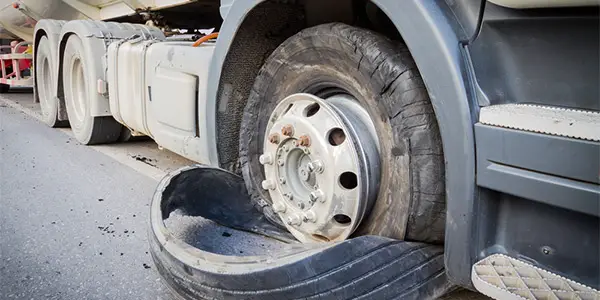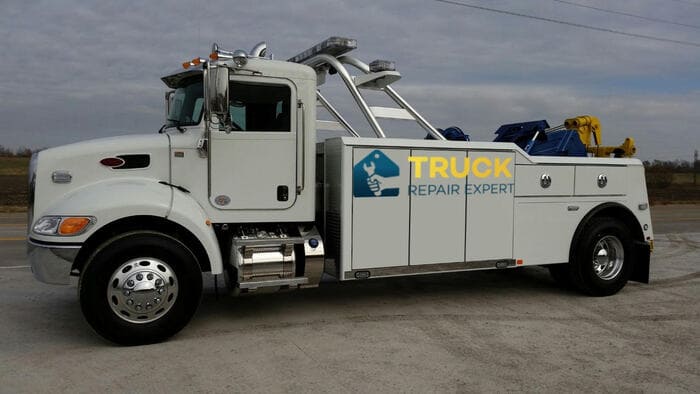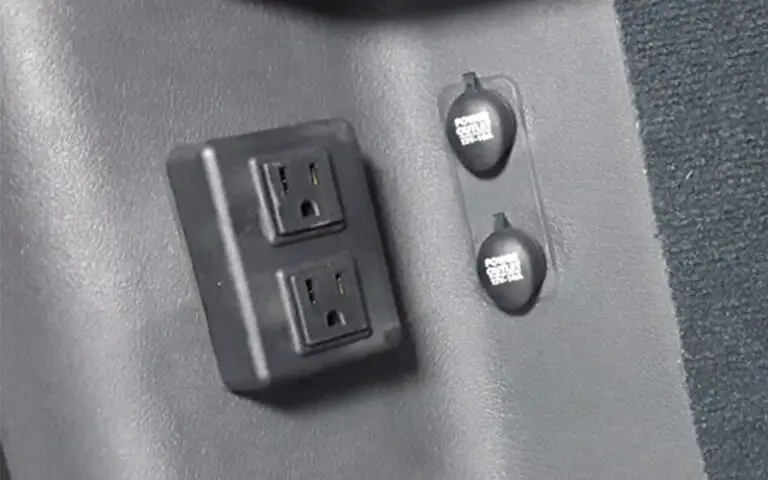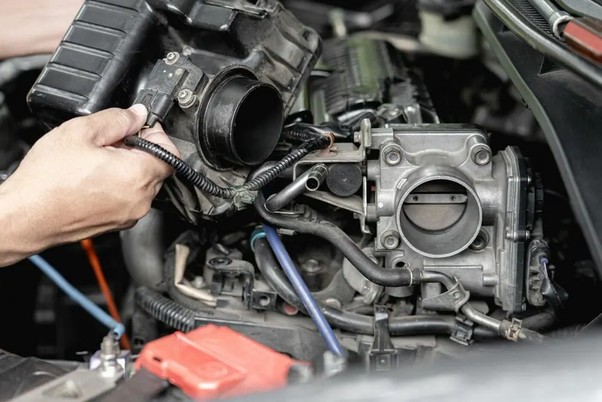
To repair a semi-truck tire, you’ll need to identify the source of the problem, such as a puncture or leak, and then either patch the hole with a repair kit or replace the tire if it’s beyond repair. Replacing a tire may require the help of a professional mechanic, but for minor repairs, you can often do it yourself with the right tools and knowledge.
Repairing a semi-truck tire is a necessary skill for any truck driver or fleet manager. A flat tire can be a major inconvenience and impact delivery schedules, but with the ability to quickly and effectively repair tire damage, you can minimize downtime and keep your truck on the road.
We’ll cover the essential steps and tools required to repair semi-truck tires, ensuring that you have the knowledge to address any tire issues that may arise during your journeys.

Credit: keatingandsonstire.com
Navigate As You Want: [show]
Inspecting The Tire
Inspecting the tire is an essential step in repairing a semi truck tire. Checking for damage is the first thing you should do. Look for any cuts, punctures, or bulges on the tire. If you spot any, it may indicate a need for repair or replacement. Measuring tread depth is another important aspect to consider. Place a tread depth gauge into the grooves of the tire and measure the depth. The legal minimum tread depth requirement varies by jurisdiction, but generally, a tread depth of 4/32 inch or more is considered safe. If the tread depth is below the recommended level, it may be necessary to replace the tire. Regularly inspecting and maintaining your semi truck tires can help prevent potential hazards and ensure the safety and efficiency of your vehicle.
Removing The Tire
When repairing a semi truck tire, the first step is to loosen the lug nuts on the affected tire. Make sure the truck is parked on a level surface and then use a jack to lift the truck off the ground. Once the tire is off the ground, use a tire iron to loosen the lug nuts on the tire. Use caution to ensure the truck is stable and secure before lifting it. Carefully removing the tire is crucial to avoid any accidents or damage.
Repairing The Tire
When repairing a semi truck tire, it’s important to address small punctures by patching them. Use a tire plug or patch kit to securely seal the hole. Additionally, check the tire thoroughly to ensure no other damage is present. Moreover, for damaged valve stems, replacing them promptly is crucial. Use a valve stem puller to remove the old stem before installing a new one. In this process, ensure the new stem is tightly secured to prevent air leaks. If you encounter difficulty, consult a professional for assistance.
Mounting The Tire
When repairing a semi truck tire, mounting the tire correctly is an important step. To align the tire and wheel, a mounting machine is typically used. The mounting machine helps ensure that the tire is securely attached to the wheel, reducing the risk of any issues down the road. The machine positions the tire onto the wheel and applies pressure to evenly distribute it. This ensures a proper fit and prevents any potential imbalances that could affect the performance of the tire. Aligning the tire and wheel accurately is crucial for a smooth and safe ride. It is recommended to have a professional handle the mounting process to ensure it is done correctly. By utilizing a mounting machine, you can have peace of mind that your semi truck tire is properly installed and ready for the road.
Reinstalling The Tire
To repair a semi truck tire, you need to know how to reinstall the tire properly. Tightening the lug nuts and lowering the jack are essential steps in this process. To tighten the lug nuts, you should use a torque wrench and tighten them in a star or criss-cross pattern. This helps to ensure even distribution of pressure and prevents the tire from being unevenly tightened. Make sure the lug nuts are securely fastened to avoid any potential accidents on the road. After tightening the lug nuts, it’s important to lower the jack slowly and check the tire pressure using a tire pressure gauge. This ensures the tire has been properly inflated and ready for use. Remember, properly reinstalling a semi truck tire not only ensures your safety on the road but also extends the lifespan of the tire. Follow these steps carefully to repair your semi truck tire effectively.

Credit: m.youtube.com

Credit: truckrepairexpert.com
Frequently Asked Questions For How To Repair Semi Truck Tire
How Can I Repair A Flat Tire On My Semi Truck?
To repair a flat tire on a semi truck, start by removing the damaged tire and wheel assembly. Inspect the tire for any visible damage, such as punctures or cuts. If the damage is repairable, use a proper tire repair kit to patch the hole and re-inflate the tire to the recommended pressure.
Finally, remount the tire back onto the semi truck.
Can I Repair A Sidewall Puncture On My Semi Truck Tire?
No, it is generally not recommended to repair sidewall punctures on semi truck tires. The sidewall is a crucial part of the tire’s structure and any repair might compromise its integrity. Additionally, tire repair standards often prohibit fixing sidewall damage.
It is advisable to replace the tire with a new one to ensure safety and optimal performance.
How Often Should I Inspect My Semi Truck Tires For Damage?
It is important to regularly inspect your semi truck tires for damage. A visual inspection should be done before every journey and at regular intervals during long trips. Inspect for any signs of wear, cuts, bulges, punctures, or uneven tread wear.
Check the tire pressure as well. Regular inspections will help identify and address any potential issues early on, ensuring safe and efficient truck operations.
Conclusion
Repairing a semi truck tire is essential for maintaining safety and efficiency on the road. By following the step-by-step methods outlined in this blog post, you can easily fix common tire issues and avoid costly replacements. Remember to regularly inspect your tires and address any damages promptly for a smooth and uninterrupted journey.
Happy trucking!



